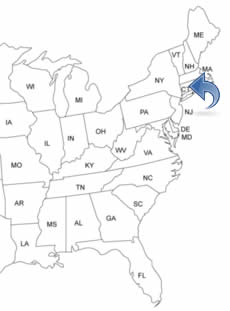CONNECTICUT PEOPLE SEARCH!
- ✔ Contact Info
- ✔ Phone Numbers
- ✔ Criminal Records
- ✔ Income Info
- ✔ Neighbors
- ✔ People's Age
- ✔ Property Ownership
- ✔ And Much More
Bridgeport, Connecticut
Bridgeport is located in the southwest region of Connecticut and is the largest city in the U.S. State of Connecticut. Bridgeport has beaches and parks, but the biggest attraction is the Klein Memorial Auditorium. It is a performing arts theater.
To See And To Do In Bridgeport
- Klein Memorial Auditorium
- Barnum Museum
- City Lights Gallery
- Housatonic Museum of Art
- Seaside Park
- Beardsley Zoo
- Fifth State Distillery
History Of Bridgeport - Timeline
Long before the first Europeans came, Bridgeport was occupied by the Pequonnock Indian. In 1639, the area was first settled. In 1644, more people came and settled in the area. The first recorded English settlement in Bridgeport was made in 1659 and was called Pequonnock. In 1760, wharves were built on Bridgeport Harbor. In 1775, the white settlers paid the Native Indians to leave, In 1776, the town was renamed to Newfield.
In 1800, the town was renamed to Bridgeport. In 1810, about 1,100 people lived in the town. In 1821, Bridgeport was incorporated as a town. In 1832, the Eagle's Nest/Johnson-DeRivera House was completed where Jettie Tisdale School is standing today. In 1836, Bridgeport was chartered as a city.
In 1839, the Peyton Randolph Bishop House was built. Bridgeport's growth accelerated after the opening of a railroad to the city in 1840. In 1842, the Bridgeport Savings Bank opened. (Today's People's United Bank). In 1848, Iranistan, the residence of P.T. Barnum, was built. Also in 1848, the Mary and Eliza Freeman Houses were built. The owners, Mary and Eliza Freeman, were free women of color. In 1850, more than 7,500 people lived in the city. In 1854, Bridgeport City Hall was built.
In 1860, Abraham Lincoln visited the city. In 1873, St. John's Episcopal Church building was completed. In 1874, the Penfield Reef Light was built. In 1876, Central High School was established. In 1878, Bridgeport Hospital was founded. In 1880, the Bridgeport Public Library was established.
In 1888, the Fairfield County Courthouse was built. In 1893, the Barnum Museum building, and the First Baptist Church, and the Maplewood School was completed. In 1894, Bikur Cholim Synagogue was built. In 1895, the lighthouse "Tongue Point Light" was built. The city rapidly industrialized in the late-19th century and became a manufacturing center producing such goods as the famous Bridgeport milling machine, brass fittings, carriages, sewing machines, saddles, and ammunition.
In 1900, 71,000 people lived in the city. In 1903, the St. Vincent's Medical Center was founded. In 1927, the University of Bridgeport was founded. In 1961, Martin Luther King Jr. visited Bridgeport a couple of times. In 2001, the Webster Bank Arena opened.
